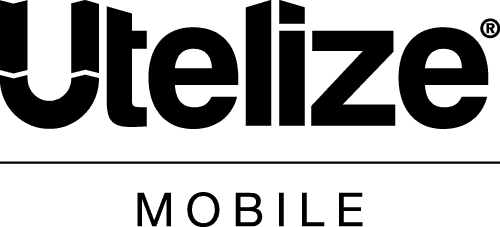
Unlock the value of your intellectual property
Unlock the value of your intellectual property
Unlock the value of your intellectual property
Identify all your intangibles and demonstrate their value to lenders, investors, acquirers, licensees and stakeholders
Identify all your intangibles and demonstrate their value to lenders, investors, acquirers, licensees and stakeholders
Identify all your intangibles and demonstrate their value to lenders, investors, acquirers, licensees and stakeholders




Trusted by brands and organisations around the world
Trusted by brands and organisations around the world
Trusted by brands and organisations around the world
IP toolkit
Get to grips with your
IP and intangible assets
Get to grips with your
IP and intangible assets




Could your IP unlock a business loan?
Could your IP unlock a business loan?
Could your IP unlock a business loan?
Your intellectual property and intangible assets like patents, trade marks, copyrighted software, designs and data could be used as security for a loan
Your intellectual property and intangible assets like patents, trade marks, copyrighted software, designs and data could be used as security for a loan
Your intellectual property and intangible assets like patents, trade marks, copyrighted software, designs and data could be used as security for a loan
£250k - £15 million
£250k - £15 million
Range of debt facilities provided by UK lenders taking IP as security
Range of debt facilities provided by UK lenders taking IP as security
£2.25 million
£2.25 million
Average IP value found that could form the basis of a security interest
Average IP value found that could form the basis of a security interest
Sci-Net gets £700,000 NatWest financing using IP as collateral
Sci-Net gets £700,000 NatWest financing using IP as collateral
Sci-Net gets £700,000 NatWest financing using IP as collateral
Traditional loans can be limited as to how much you can borrow, unless you have a physical asset like a building. With IP loans, the IP is the collateral. That means if you don’t have tangible assets, you can still secure a loan at better rates and it’s more flexible.
Duncan Fergusson
Managing Director, Sci-Net Limited.








Your intellectual property toolkit
Your intellectual property toolkit
Your intellectual property toolkit
The Inngot IP platform identifies all your intangibles and demonstrates their value to lenders, investors, acquirers, licensees and stakeholders
The Inngot IP platform identifies all your intangible assets and demonstrates their value to lenders, investors, acquirers, licensees and stakeholders
The Inngot IP platform identifies all your intangibles and demonstrates their value to lenders, investors, acquirers, licensees and stakeholders
The Inngot IP platform identifies all your intangibles and demonstrates their value to lenders, investors, acquirers, licensees and stakeholders
Goldseam® IP profile
Our FREE Goldseam® IP profiling tool takes you through your IP and intangible assets step-by-step
Goldseam® IP profile
Our FREE Goldseam® IP profiling tool takes you through your IP and intangible assets step-by-step
Goldseam® IP profile
Our FREE Goldseam® IP profiling tool takes you through your IP and intangible assets step-by-step
Goldseam® IP profile
Our FREE Goldseam® IP profiling tool takes you through your IP and intangible assets step-by-step
Sollomon® IP valuation
Sollomon® allows you to value your IP online at a fraction of the cost of traditional IP valuations
Sollomon® IP valuation
Sollomon® allows you to value your IP online at a fraction of the cost of traditional IP valuations
Sollomon® IP valuation
Sollomon® allows you to value your IP online at a fraction of the cost of traditional IP valuations
Sollomon® IP valuation
Sollomon® allows you to value your IP online at a fraction of the cost of traditional IP valuations
Hallmarq™ Collateral suitability
Check if you're intellectual property and intangibles can be used as security for a loan with Hallmarq™
Hallmarq™ collateral suitability
Check if your intellectual property and intangible assets can be used as security for a loan with Hallmarq™
Hallmarq™ Collateral suitability
Check if you're intellectual property and intangibles can be used as security for a loan with Hallmarq™
Hallmarq™ Collateral suitability
Check if you're intellectual property and intangibles can be used as security for a loan with Hallmarq™
Builds a comprehensive IP asset profile
Powered by 80+ different types of intangible assets
Underpinned by international IP databases
Identifies valuable hidden assets
Does not require any specialist IP knowledge
Available in all countries
+ VAT
£795
Value your IP with Sollomon® - the world's first online IP valuation tool
Trusted by banks, accountants, advisors and investors
Grounded in international valuation standards
Values IP at a fraction of the cost of manual IP valuations
Fast, reliable, trusted, repeatable
Based on your Goldseam® IP profile
POPULAR
+ VAT
£395
Used by participating banks to decide how much to lend against your IP
Assesses whether your IP is usable as security for a business loan
Final report shareable with relevant IP finance lenders
Confirms the separability, saleability and strength of your IP
Based on your Sollomon® IP valuation
Builds a comprehensive IP asset profile
Powered by 80+ different types of intangible assets
Underpinned by international IP databases
Identifies valuable hidden assets
Does not require any specialist IP knowledge
Available in all countries
+ VAT
£795
Value your IP with Sollomon® - the world's first online IP valuation tool
Trusted by banks, accountants, advisors and investors
Grounded in international valuation standards
Values IP at a fraction of the cost of manual IP valuations
Fast, reliable, trusted, repeatable
Based on your Goldseam® IP profile
POPULAR
+ VAT
£395
Used by participating banks to decide how much to lend against your IP
Assesses whether your IP is usable as security for a business loan
Final report shareable with relevant IP finance lenders
Confirms the separability, saleability and strength of your IP
Based on your Sollomon® IP valuation
Builds a comprehensive IP asset profile
Powered by 80+ different types of intangible assets
Underpinned by international IP databases
Identifies valuable hidden assets
Does not require any specialist IP knowledge
Available in all countries
+ VAT
£795
Value your IP with Sollomon® - the world's first online IP valuation tool
Trusted by banks, accountants, advisors and investors
Grounded in international valuation standards
Values IP at a fraction of the cost of manual IP valuations
Fast, reliable, trusted, repeatable
Based on your Goldseam® IP profile
POPULAR
+ VAT
£395
Used by participating banks to decide how much to lend against your IP
Assesses whether your IP is usable as security for a business loan
Final report shareable with relevant IP finance lenders
Confirms the separability, saleability and strength of your IP
Based on your Sollomon® IP valuation
Builds a comprehensive IP asset profile
Powered by 80+ different types of intangible assets
Underpinned by international IP databases
Identifies valuable hidden assets
Does not require any specialist IP knowledge
Available in all countries
+ VAT
£795
Value your IP with Sollomon® - the world's first online IP valuation tool
Trusted by banks, accountants, advisors and investors
Grounded in international valuation standards
Values IP at a fraction of the cost of manual IP valuations
Fast, reliable, trusted, repeatable
Based on your Goldseam® IP profile
POPULAR
+ VAT
£395
Used by participating banks to decide how much to lend against your IP
Assesses whether your IP is usable as security for a business loan
Final report shareable with relevant IP finance lenders
Confirms the separability, saleability and strength of your IP
Based on your Sollomon® IP valuation

IP services
Tailored IP services
Bespoke IP valuation
Our custom IP valuation reports include an in-depth assessment of your IP and intangibles, quantifying their value in your current and future markets
IP audit
An IP audit provides an in-depth review of all your intangible assets, identifying opportunities to strengthen your competitive advantage
IP strategy
An IP strategy from Inngot experts delivers a structured plan to manage and build your IP and intangible asset portfolio to drive commercial success
IP training
Understand the full range of IP and intangible assets, and learn how to protect them, manage them and grow their value. Training for individuals, teams, departments or organisations.
IP research
Global organisations, government departments, innovation agencies and professional bodies trust Inngot to deliver authoritative research

IP services
Tailored IP services
Bespoke IP valuation
Our custom IP valuation reports include an in-depth assessment of your IP and intangible assets, quantifying their value in your current and future markets
IP audit
An IP audit provides an in-depth review of all your intangible assets, identifying opportunities to strengthen your competitive advantage
IP strategy
An IP strategy from Inngot experts delivers a structured plan to manage and build your IP and intangible asset portfolio to drive commercial success
IP training
Understand the full range of IP and intangible assets, and learn how to protect them, manage them and grow their value. Training for individuals, teams, departments or organisations.
IP research
Global organisations, government departments, innovation agencies and professional bodies trust Inngot to deliver authoritative research

IP services
Tailored IP services
Bespoke IP valuation
Our custom IP valuation reports include an in-depth assessment of your IP and intangibles, quantifying their value in your current and future markets
IP audit
An IP audit provides an in-depth review of all your intangible assets, identifying opportunities to strengthen your competitive advantage
IP strategy
An IP strategy from Inngot experts delivers a structured plan to manage and build your IP and intangible asset portfolio to drive commercial success
IP training
Understand the full range of IP and intangible assets, and learn how to protect them, manage them and grow their value. Training for individuals, teams, departments or organisations.
IP research
Global organisations, government departments, innovation agencies and professional bodies trust Inngot to deliver authoritative research

IP services
Tailored IP services
Bespoke IP valuation
Our custom IP valuation reports include an in-depth assessment of your IP and intangibles, quantifying their value in your current and future markets
IP audit
An IP audit provides an in-depth review of all your intangible assets, identifying opportunities to strengthen your competitive advantage
IP strategy
An IP strategy from Inngot experts delivers a structured plan to manage and build your IP and intangible asset portfolio to drive commercial success
IP training
Understand the full range of IP and intangible assets, and learn how to protect them, manage them and grow their value. Training for individuals, teams, departments or organisations.
IP research
Global organisations, government departments, innovation agencies and professional bodies trust Inngot to deliver authoritative research
Latest news

20 Nov 2025

20 Nov 2025

20 Nov 2025

20 Nov 2025
Customer reviews :)
Customer reviews :)
To have this Sollomon report in terms of your introduction to IP is really useful. It’s a very sophisticated tool and I can appreciate how much work went into it to be able to create what the Inngot team have created. But also the customer service and support have been great.

Jurga Zilinskiene MBE
Founder & CEO - Guildhawk
To have this Sollomon report in terms of your introduction to IP is really useful. It’s a very sophisticated tool and I can appreciate how much work went into it to be able to create what the Inngot team have created. But also the customer service and support have been great.

Jurga Zilinskiene MBE
Founder & CEO - Guildhawk
To have this Sollomon report in terms of your introduction to IP is really useful. It’s a very sophisticated tool and I can appreciate how much work went into it to be able to create what the Inngot team have created. But also the customer service and support have been great.

Jurga Zilinskiene MBE
Founder & CEO - Guildhawk
To have this Sollomon report in terms of your introduction to IP is really useful. It’s a very sophisticated tool and I can appreciate how much work went into it to be able to create what the Inngot team have created. But also the customer service and support have been great.

Jurga Zilinskiene MBE
Founder & CEO - Guildhawk
The Inngot IP valuation for Sam Pearce Design was very useful. It gave us confidence while planning our pitches to potential investors, which have been very successful. Once we move to the due diligence stage, we plan to share the Inngot document as part of that process.

Gemma Pearce
Founder & Director - Sam Pearce Design
The Inngot IP valuation for Sam Pearce Design was very useful. It gave us confidence while planning our pitches to potential investors, which have been very successful. Once we move to the due diligence stage, we plan to share the Inngot document as part of that process.

Gemma Pearce
Founder & Director - Sam Pearce Design
The Inngot IP valuation for Sam Pearce Design was very useful. It gave us confidence while planning our pitches to potential investors, which have been very successful. Once we move to the due diligence stage, we plan to share the Inngot document as part of that process.

Gemma Pearce
Founder & Director - Sam Pearce Design
The Inngot IP valuation for Sam Pearce Design was very useful. It gave us confidence while planning our pitches to potential investors, which have been very successful. Once we move to the due diligence stage, we plan to share the Inngot document as part of that process.

Gemma Pearce
Founder & Director - Sam Pearce Design
We use Inngot’s IP audit a lot. Since getting Inngot’s audit, we have filed for a trade mark, we have implemented a trade secrets register and policy, we’ve created an IP strategy, and I have been appointed IP manager for the company. Inngot gave us professional advice and training to do all that.

Alenka Zema
Manager of IP and Grant-Funded Projects - LiNa Energy
We use Inngot’s IP audit a lot. Since getting Inngot’s audit, we have filed for a trade mark, we have implemented a trade secrets register and policy, we’ve created an IP strategy, and I have been appointed IP manager for the company. Inngot gave us professional advice and training to do all that.

Alenka Zema
Manager of IP and Grant-Funded Projects - LiNa Energy
We use Inngot’s IP audit a lot. Since getting Inngot’s audit, we have filed for a trade mark, we have implemented a trade secrets register and policy, we’ve created an IP strategy, and I have been appointed IP manager for the company. Inngot gave us professional advice and training to do all that.

Alenka Zema
Manager of IP and Grant-Funded Projects - LiNa Energy
We use Inngot’s IP audit a lot. Since getting Inngot’s audit, we have filed for a trade mark, we have implemented a trade secrets register and policy, we’ve created an IP strategy, and I have been appointed IP manager for the company. Inngot gave us professional advice and training to do all that.

Alenka Zema
Manager of IP and Grant-Funded Projects - LiNa Energy
The tools are very useful if you’re starting a business and trying to evaluate your IP. I don’t know any other company that provides a service like this and I would recommend it. It definitely helped bring our attention to certain parts of our IP and intangible portfolio.

Marcel Fowler
Founder and CEO - New Motion Labs
The tools are very useful if you’re starting a business and trying to evaluate your IP. I don’t know any other company that provides a service like this and I would recommend it. It definitely helped bring our attention to certain parts of our IP and intangible portfolio.

Marcel Fowler
Founder and CEO - New Motion Labs
The tools are very useful if you’re starting a business and trying to evaluate your IP. I don’t know any other company that provides a service like this and I would recommend it. It definitely helped bring our attention to certain parts of our IP and intangible portfolio.

Marcel Fowler
Founder and CEO - New Motion Labs
The tools are very useful if you’re starting a business and trying to evaluate your IP. I don’t know any other company that provides a service like this and I would recommend it. It definitely helped bring our attention to certain parts of our IP and intangible portfolio.

Marcel Fowler
Founder and CEO - New Motion Labs
We conducted the valuation because BDO is helping us set up a new international corporate structure, carving Stream out from VAT IT Group. We needed to find out exactly what the IP relating to Stream was and what it might be worth so the new company could buy it.

Willem Van den Berg
Chief Financial Officer - Stream
We conducted the valuation because BDO is helping us set up a new international corporate structure, carving Stream out from VAT IT Group. We needed to find out exactly what the IP relating to Stream was and what it might be worth so the new company could buy it.

Willem Van den Berg
Chief Financial Officer - Stream
We conducted the valuation because BDO is helping us set up a new international corporate structure, carving Stream out from VAT IT Group. We needed to find out exactly what the IP relating to Stream was and what it might be worth so the new company could buy it.

Willem Van den Berg
Chief Financial Officer - Stream
We conducted the valuation because BDO is helping us set up a new international corporate structure, carving Stream out from VAT IT Group. We needed to find out exactly what the IP relating to Stream was and what it might be worth so the new company could buy it.

Willem Van den Berg
Chief Financial Officer - Stream
BDO has worked with Inngot in a number of circumstances, and has found that the platform for valuing IP is a great support to businesses that need an understanding of the value of their IP for commercial purposes. The team are insightful and easy to work with, providing pragmatic, clear, high quality output at a reasonable price.

Ross Robertson
Partner/International tax - BDO
BDO has worked with Inngot in a number of circumstances, and has found that the platform for valuing IP is a great support to businesses that need an understanding of the value of their IP for commercial purposes. The team are insightful and easy to work with, providing pragmatic, clear, high quality output at a reasonable price.

Ross Robertson
Partner/International tax - BDO
BDO has worked with Inngot in a number of circumstances, and has found that the platform for valuing IP is a great support to businesses that need an understanding of the value of their IP for commercial purposes. The team are insightful and easy to work with, providing pragmatic, clear, high quality output at a reasonable price.

Ross Robertson
Partner/International tax - BDO
BDO has worked with Inngot in a number of circumstances, and has found that the platform for valuing IP is a great support to businesses that need an understanding of the value of their IP for commercial purposes. The team are insightful and easy to work with, providing pragmatic, clear, high quality output at a reasonable price.

Ross Robertson
Partner/International tax - BDO
Are you ready to start your IP journey?
Inngot's online platform identifies all your intangible assets and demonstrates their value to lenders, investors, acquirers, licensees and stakeholders
Accreditations



Copyright © Inngot Limited 2019-2025. All rights reserved.
Inngot's online platform identifies all your intangible assets and demonstrates their value to lenders, investors, acquirers, licensees and stakeholders
Accreditations



Copyright © Inngot Limited 2019-2025. All rights reserved.
Inngot's online platform identifies all your intangible assets and demonstrates their value to lenders, investors, acquirers, licensees and stakeholders
Accreditations



Copyright © Inngot Limited 2019-2025. All rights reserved.
Inngot's online platform identifies all your intangible assets and demonstrates their value to lenders, investors, acquirers, licensees and stakeholders
Accreditations



Copyright © Inngot Limited 2019-2025. All rights reserved.


























